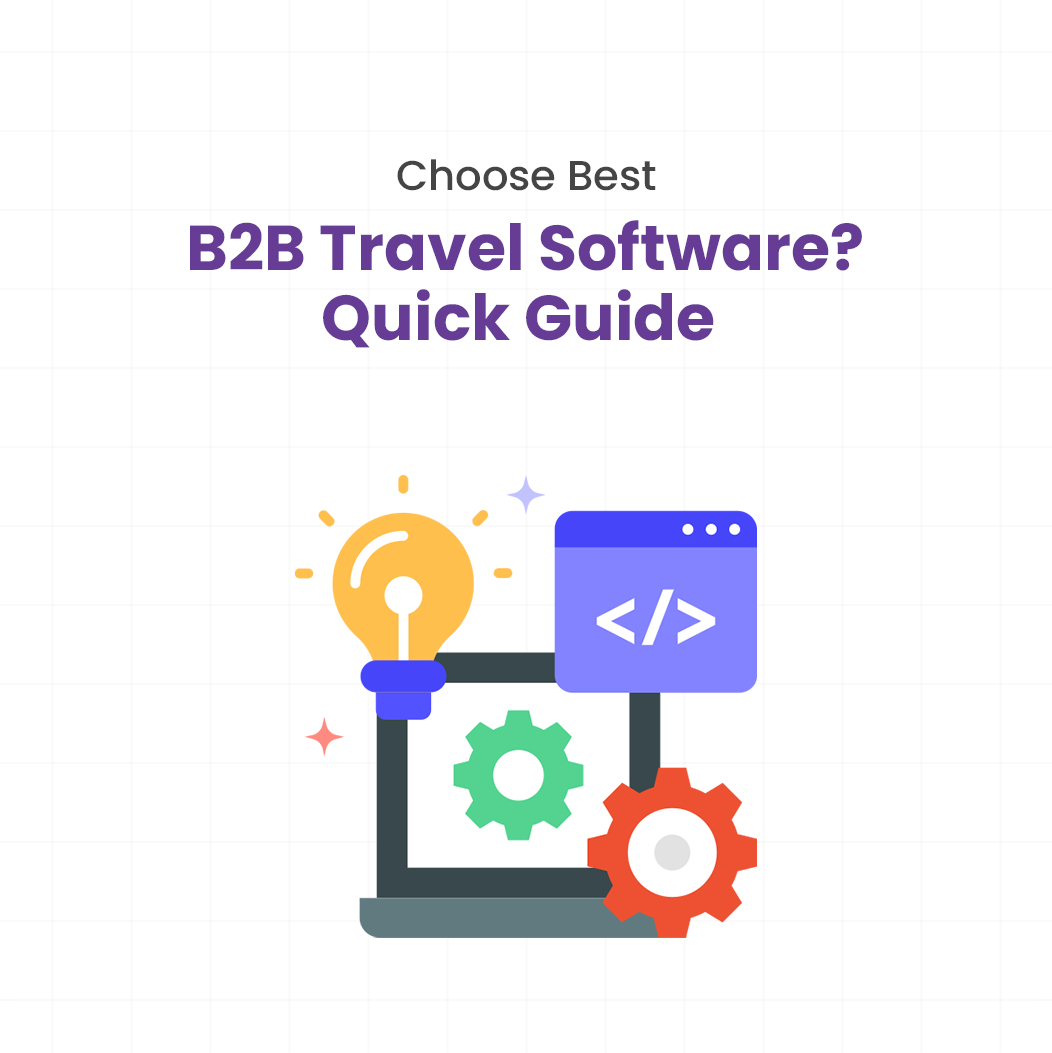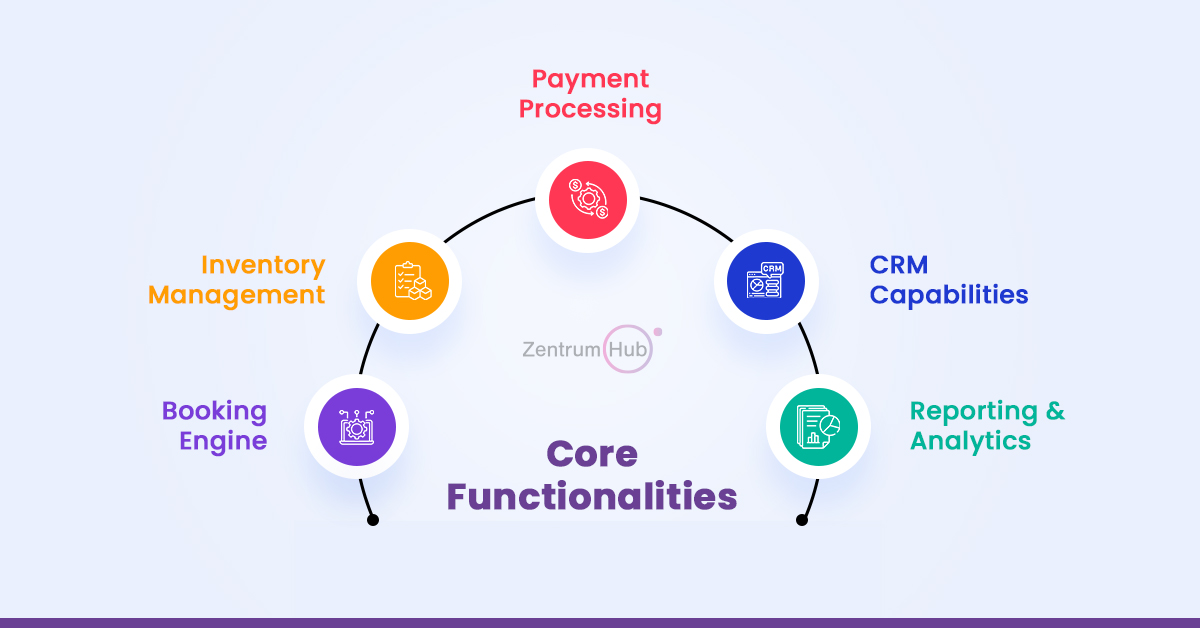In today’s fast-paced travel industry, having the right technology stack can make or break your business. For travel agencies, tour operators, and other travel companies, selecting the ideal B2B travel software is not merely about keeping pace with competitors—it’s about setting the stage for long-term growth and operational efficiency.
With the plethora of options available, choosing the right B2B travel software can be overwhelming. This guide will help you navigate through the maze of software solutions by highlighting essential factors you need to consider in order to make the best choice for your business.
Why Your Choice of B2B Travel Software Matters
Before we dive into the specific selection criteria, let’s understand why choosing the right B2B travel software is vital:
- Operational Efficiency: The right software can automate mundane tasks, reducing manual labor and human errors. This leads to greater productivity across the board.
- Competitive Edge: Advanced features can provide better services than your competitors, helping you stand out in a crowded market.
- Revenue Growth: The software can identify upselling opportunities and optimize pricing strategies, allowing you to maximize profits.
- Customer Satisfaction: Streamlined booking processes and personalized services lead to improved customer experience and retention.
- Future-Proofing: Scalable solutions ensure your software can grow with your business, adapting to industry changes and new technologies.
Key Factors to Consider When Choosing B2B Travel Software
1. Core Functionalities
At the heart of any B2B travel software are essential functionalities that form the backbone of your operations. These key features ensure that your business runs smoothly and your customers get the best experience possible.
Booking Engine
- Multi-product Support: The software should support a wide range of travel products, including flights, hotels, car rentals, packages, and activities.
- Flexible Search Parameters: Your system should allow users to filter and search for the services they need based on multiple criteria.
- User Interface: The interface should be fast, responsive, and intuitive, with minimal latency and clear call-to-action buttons.
- Complex Itinerary Handling: The ability to manage intricate, multi-destination bookings with ease.
Inventory Management
- Real-Time Availability: Access to live inventory updates ensures that your offerings are up to date, preventing overbookings.
- Dynamic Pricing: The system should support automatic pricing adjustments based on demand and availability.
- Centralized Management: Easily manage inventory across different channels and locations to avoid discrepancies.
- Overbooking Prevention: Essential for maintaining customer trust, this feature prevents booking conflicts.
Payment Processing
- Multiple Gateways: Your software should integrate with various payment systems for global convenience.
- Security: Look for tokenization, encryption, and other forms of secure processing.
- Flexible Payment Options: Clients should have the flexibility to choose payment methods and installment plans that suit their needs.
CRM Capabilities
- Client Profiles: Store comprehensive details about clients to tailor their experiences.
- Customer Segmentation: Segment clients based on their behavior and preferences for targeted marketing.
- Follow-up Management: Automate reminders for follow-ups to increase conversions.
Reporting & Analytics
- Customizable Dashboards: Real-time access to key performance indicators.
- Trend Analysis Tools: Identify revenue patterns and potential areas for cost-saving.
- Revenue Forecasting: Predict future trends to make informed business decisions.
2. Supplier Connectivity
A B2B travel software solution must seamlessly connect with a wide range of suppliers to provide an extensive selection of travel products.
Wide Range of Suppliers
Ensure that the software connects with:
- Major GDS systems (Amadeus, Sabre, Travelport)
- Airlines, hotels, car rental providers, cruise lines, and tour operators
Real-Time Connectivity
Ensure live updates on:
- Availability checks
- Rate updates
- Instant confirmations and supplier notifications
API Integration
Look for software that offers:
- Easy API integration with your current system
- Webhooks for event-driven actions
- Secure, scalable API connections with backup capabilities
3. User Experience
A seamless user experience is crucial for retaining customers and improving internal workflows.
Intuitive Interface
- Easy Navigation: Ensure that all users, from employees to customers, can navigate the system with ease.
- Minimal Clicks: Reduce the number of actions needed to complete a booking or process an order.
Mobile Responsiveness
As more travel is being booked on mobile devices, ensure the B2B travel software:
- Works across all screen sizes
- Is optimized for touch input
- Loads quickly on mobile networks
Customization Options
- Branding: The software should allow you to brand the interface with your company’s logo and colors.
- User Roles and Permissions: Define what each user can access based on their role within your company.
4. Scalability and Future-Readiness
As your business grows, your B2B travel software should be able to scale to meet your expanding needs.
Growth Capacity
- Transaction Volume: The system should be able to handle increasing transactions as your business expands.
- New Business Units: Ensure the software can support multiple offices or branches.
Technology Innovation
- Future-Proofing: Check if the provider regularly updates the software and incorporates the latest technologies like AI and blockchain.
- Product Roadmap: Make sure they have a clear vision for product upgrades and new features.
5. Security and Compliance
Data security and compliance are non-negotiable. Ensure that the B2B travel software meets industry standards and regulatory requirements.
Data Protection
Look for features like:
- End-to-end encryption
- Secure user authentication
- Regular security audits
Industry Compliance
The software should comply with:
- PCI DSS for secure payments
- GDPR for data privacy
- Local tax and financial reporting regulations
6. Support and Training
It’s essential to have a reliable support team to resolve issues quickly and training resources to help your team get up to speed.
Customer Support
- Availability: 24/7 support is essential, especially if you operate globally.
- Multiple Channels: Ensure that support is available via phone, email, and chat.
Training Resources
- Documentation: Comprehensive manuals for all features.
- Interactive Training: Video tutorials and live sessions for onboarding.
7. Pricing and Total Cost of Ownership
Pricing is a major factor in any decision. Be sure to evaluate the cost versus value that the software offers.
Transparent Pricing
Look for clarity in:
- Subscription vs. transaction-based pricing
- Additional costs for training, support, and customization
Return on Investment
Estimate:
- How much time and labor you will save
- The potential for increased bookings and upselling
- Productivity improvements
Steps to Select the Right B2B Travel Software
- Define Your Requirements: Understand your specific needs and prioritize features.
- Research Providers: Evaluate multiple vendors and read customer reviews (e.g., Capterra, G2).
- Request Demos: Focus on the features that matter most for your business.
- Try Before You Buy: Use free trials to test the software’s functionality.
- Check References: Speak with businesses in similar industries to get feedback.
- Evaluate Integration: Make sure the software integrates with your existing systems.
- Review Contract Terms: Pay attention to renewal terms and potential hidden fees.
Common Pitfalls to Avoid
- Feature Overload: Don’t invest in features you won’t use.
- Ignoring Scalability: Choose software that grows with your business.
- Overlooking Training: Ensure sufficient training to avoid misusage.
- Focusing Only on Price: Remember, cheap solutions might not offer the best value.
Conclusion
Choosing the right B2B travel software requires careful consideration of all the factors mentioned above. Align your choice with your business needs, growth trajectory, and budget. Keep in mind that no software is perfect, but with the right investment, you’ll ensure your company thrives in the dynamic travel industry.
Recommended Blogs


